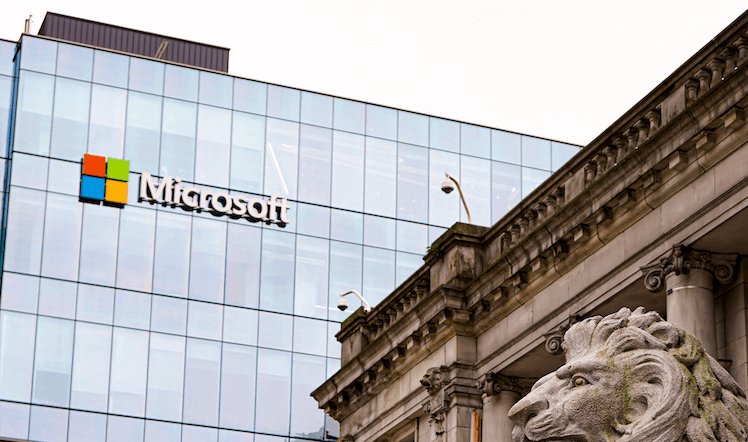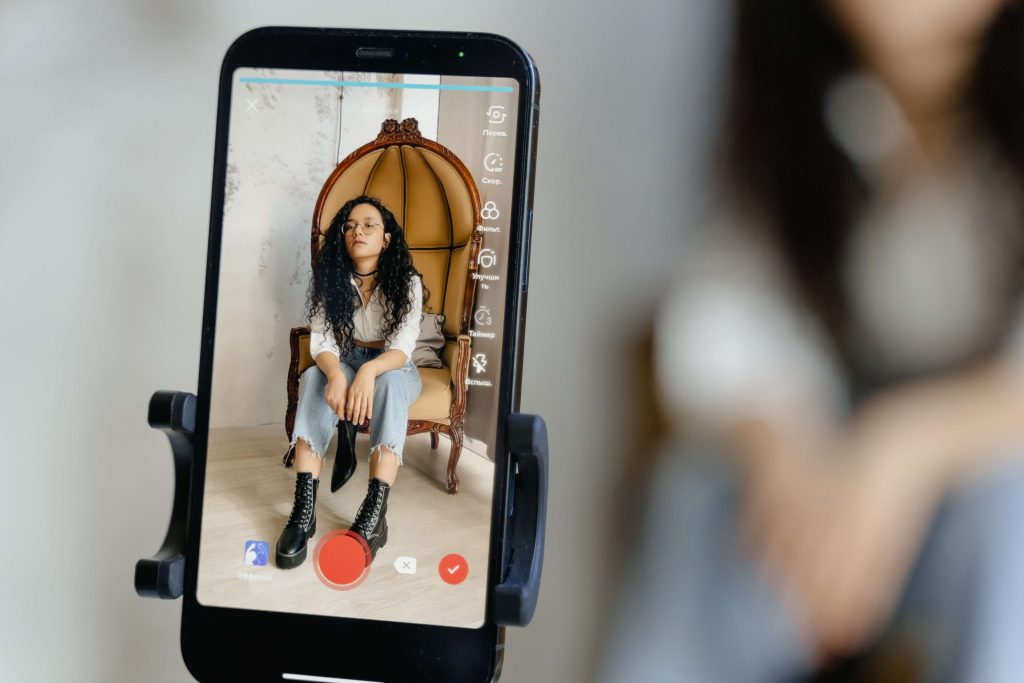7 Ad Testing & Optimization Tips for Better Performance

When it comes to digital advertising, everyone wants better performance. Here are 7 fool-proof tips to optimize your campaigns!
Celebrating Success: War Room Inc Earns Organization of the Year at The Sammys Awards

Learn more about this Ad Tech category award War Room won in 2023!
Should You Use Emojis in Ad Copy?

Did you know that 92% of the online population uses emojis? It basically transcends language and culture! Emojis are a fun way to express ourselves online when communicating with others. Not only does it make conversations with friends online easier, but emojis can keep your branded messages fun and engaging too. July 17th is World Emoji Day so we figure there’s no better time to talk about emojis and advertising. Can you and should you use emojis in ad copy? Let’s find out! Here are the topics we’ll cover: What are Emojis? Why Do People Like Using Emojis? Who Should Be Using Emojis in Ad Copy? Benefits of Using Emoji in Ad Copy Tips for Using Emojis in Ad Copy What are Emojis? Since their inception in the late 1990s, and in 2022, there are over 3000 emojis out there! Emojipedia released the top 10 most-used Emojis of 2023: How many of these do you use? Why Do People Like Using Emojis? People like using emojis because they are fun, expressive, and can help communicate a message without using words. For example: Thank you again for the gift! 🥰 I can’t wait to see you tonight 😘 Are you kidding me?!?! UGH 😤 What’s your favorite animal?” 🐶🐱🐸🙈🦭 Do you agree? 👍 👎 Emojis can also make your ad copy more visually appealing, which can help draw attention to your brand’s message. Plus, emojis are diverse and inclusive, which increases the versatility! Who Should Be Using Emojis in Ad Copy? Aside from using it to slide into people’s DMs, respond to a Tweet, or a Group Chat on WhatsApp, brands also use emojis to keep their branded messages engaging and personable. It can be hard to stand out in a world where people are constantly bombarded with ads on social media. But that’s where emojis come in. Adding emojis to your ad copy could give your captions or headlines extra oomph. Using emojis in ad copy would be a great strategy for B2C and B2B businesses, like eCommerce and SaaS companies. For businesses or industries with a more formal setting, such as law, financial institutions, or religious groups– emojis might not be appropriate.We recommend evaluating your Brand Guidelines and voice to determine how many emojis to use (or even use them). Benefits of Using Emojis in Ad Copy If you’re thinking of incorporating emojis into your ad strategy, we highly recommend focusing on social media ads, like Facebook, Instagram, Twitter, or TikTok! Benefits of using emojis in ad cop includes: higher Click-Through Rate (CTR) and potentially lower Cost-Per-Click (CPC). We recommend A/B testing a version of the ad copy with emojis and one without. Let it run through the learning phase to get data on which is performing better. Keep all the other ad elements the same, and only test one difference per test. So think: ad caption with emoji vs ad caption without emoji – and keeping the photo, and headline the same. A few years ago, Scoro conducted an A/B test for a set of their ads, one with emojis in the copy, the other without. They kept all other ad elements the same, except the headline: Version A had just the headline, and Version B had an emoji + the headline, like this: For this campaign, they observed a whopping 241% higher Click-Through Rate (CTR) on the ad with the emoji in the headline!AdEspresso by Hootsuite continued to create an A/B test with their Facebook posts to test the theory that emoji content performed better. They shared that the posts that used emojis had a 30-40% higher CTR and 20% lower Cost-Per-Click (CPC) than posts with no emojis. However, in another experiment, results showed a 12% higher CTR in emoji ads, but the ad with no emojis had a lower CPC. So as you can see, your mileage may vary. But that’s the joy in digital marketing, isn’t it? Creative experimentation and analyzing data to find out what works most effectively! Tips For Using Emojis in Ad Copy Emojis Needs to Add Value When crafting your ad copy, get the written part done first. Then, think carefully about what emoji you’re going to add and why: Does it provide more context? Is it to be funny? Is it meant to relay an emotion? Will it make the post more relatable? Is it highlighting something important you want the user to see? If it doesn’t add any value to your ad messaging, perhaps it shouldn’t be there. We don’t want to waste precious ad space on something pointless. It needs to be strategic and enhance the communication of your ad copy. Keep It Simple Do you want to see an ad that says, “Winter Sale on now: Everything is 15% off or more!!!!!!!!!!“ We appreciate the enthusiasm, but that’s a bit too aggressive on the exclamation marks, right? Think of emojis as punctuations. Use it sparingly and purposefully to avoid overkill or confusion. Keep it simple. 👍 Don’t Use Emojis to Replace a Word Emojis are meant to enhance your message, not replace it! Don’t replace entire words with emojis. It makes it harder to read (we’re not here to decipher glyphs like Indiana Jones) – the purpose of ads is to communicate effectively. Also, if the emoji isn’t able to be shown on the users’ phone (rarely, but possible), your ad will essentially be gibberish to them, which means wasted ad spend! For example, which did you find easier to understand: 10 🚩to 👀 When Buying a 🏠 10 Red Flags to Look Out for When Buying a House 🚩 Don’t use emojis to replace a word. Use emojis to enhance your text. 💡 Use an Emoji to Start a Headline or Bullet Point. Did this catch your attention? The emoji helps the headline pop out and grab the viewer’s attention. As we mentioned in an earlier section, A/B test it out! Use Emojis to End a Caption. ✍️ Note here we said “emojis” as in plural. A caption
10 eCommerce Trends to Watch Out for in 2023

Discover the key trends that are reshaping the eCommerce market and should be included in the marketing strategies for success in 2023 and beyond!
Essential KPIs for Effective Lead Generation Strategies

Discover Artificial Intelligence’s (AI) transformative power in digital marketing and advertising.
How AI is Revolutionizing Digital Marketing

Discover Artificial Intelligence’s (AI) transformative power in digital marketing and advertising.
Microsoft Bing Ads vs Google Ads

Microsoft vs Google Ads — it’s an online ad titan showdown! Google Ads have always been the king of PPC. However, in 2022, marketers had spent a total of $11.59 billion on Microsoft Advertising (or previously known as Bing Ads). This means we should not underestimate Microsoft presence in the advertising game! In this guide, we’ll take a look at what PPC is, then take a look at the ad options between Microsoft and Google, the user demographics, and more. You’ll be able to make an informed decision on what works best for your business and generate website traffic and leads with ease! Let’s get this showdown on the road. Here’s the outline, feel free to skip to a section that interests you the most. What is Pay-Per-Click An Overview of Microsoft Advertising vs Google Ads Paid Search Display Ads Shopping Ads Microsoft Advertising vs Google Ads: Pros & Cons Should I Use Microsoft or Google Ads? What is Pay-Per-Click (PPC)? Pay-Per-Click is the most common digital advertising model. The primary goal is to drive website traffic. Because webpages and search engines have limited ad space, brands will need to compete in online auctions for ad placements. You set an advertising budget and bid based on how much you’re willing to pay for clicks on your ad. Hence, you pay per click. For example, you’re a churro company, so you bid on the keyword “churro.” You determine how much you want to bid. Next, you enter online auctions to bid against other competitors on the word “churro.” Finally, the highest bidder wins and gets the top placement. These factors determine your ad position: Relevancy: how close your ad and landing page align with search queries How your bid compares to your competitors’ bids in the online advertising auction Historical ad performance and Click-Through Rate (CTR) A combination of these factors will determine your chance of “winning” the top ad position. Note that there is no set price when it comes to PPC. It depends on your industry, seasonality (e.g., Christmas season), trends (eg. COVID-19), location keyword competitiveness, and the lifecycle of your customer. We discussed Google and Bing Ads in the Paid Search section of our blog, “How to Choose the Right Advertising Channel”. Yet, both of these ad platforms have PPC options that encompass more than Search Ads. Both also offer: Display and Shopping Ads. We’ll break them down one by one, Microsoft vs Google Ads style. Before we dive into that, here’s a quick overview of Microsoft and Google and their user demographics. An Overview of Microsoft Advertising vs Google Ads Microsoft Advertising / Bing Ads Bing is a search engine owned and ran by Microsoft. It provides services such as web, image, maps, and video, etc. Bing Ads is the name of their advertising service but recently was renamed ‘Microsoft Advertising’ in 2019. This is because Microsoft’s ads can now serve on Bing, Yahoo, MSN, and AOL networks. Microsoft Bing User Demographics Bing primarily makes money from Microsoft Advertising. Here are some important facts to note about the Bing user demographic: 85% of people who use Bing are in the US Bing accounts for 30% of all searches in the US 87% of Bing users come from Internet Explorer Bing’s user demographic leans towards blue-collar when compared to Google Over 70% of users are aged 35 or older The average age of Bing users is 45 years old 46% of users are married 30% of users have children at home 38% of those who use Bing have a household income of more than $100,000 Even though Bing only accounts for about a third of the US search engine market, it performs very well in specific industries. For example, 44% of business and finance-related paid search ad clicks are from Bing! Google Ads Google is a tech giant that offers the world’s most used search engine, cloud drives, products, software, and much more. Google Ads is Google’s online advertising platform. Ad offerings include Google search, third-party websites, mobile, Youtube, etc. Google User Demographics & Facts Here are some facts that demonstrate Google Ads is a powerhouse: Google has over 1 billion active monthly users Compared to Bing, Google’s users are younger and more tech-savvy Google’s userbase demographic is pre-dominantly white-collar An average user spends 12 minutes every day on Google 80% of all companies focus on Google Ads for their PPC strategy Google.com is the most-visited domain in the world Google processes 40,000 search queries every second Google owns 73% of the Paid Search market Google generates 62% of all search queries in the US Paid Search: Microsoft vs Google Ads Paid Search is known as PPC, where your business shows up in Search Engine Result Pages (SERPs). The purpose is to appear in front of potential customers so they can find your product or service. Paid Search ads require planning, strategy, and ongoing management. You need to: Craft keywords Write compelling copy Build an effective landing page Make bid adjustments on the go and more A combination of these factors will determine your chance of “winning” the top ad position. Advertisers use Paid Search to: Rank better amongst competitors Capture people with high purchase intent Hyper-target audiences based on their demographic, and interests, etc Make data-driven decisions while having control over ad dollars Types of Microsoft Search Ads Expanded Text Ads Expanded text ad consists of different options: Advertisers will be able to preview what their ads would look like on Microsoft Bing’s search results. Dynamic Search Ads Dynamic Search Ads look like Expanded Text Ads but show up for relevant search queries based on your website content. It’s a great option because auto-created ads can now show up in relevant search queries. It saves advertisers time: no need to create keywords etc. Furthermore, it fills in the gap for missed opportunities! Bing Smart Search Bing Smart Search ads look like the text ads that show up in Bing, AOL, and Yahoo’s search networks. What’s different is it’s finetuned for Windows 8.1 Smart Search. It includes a preview of
The Rise of Influencer Marketing: Leveraging Social Media Stars

Find out why brands are hopping on the influencer train and how it could benefit your marketing strategy, and what steps to take if you’re interested in collaborating with an influencer!
